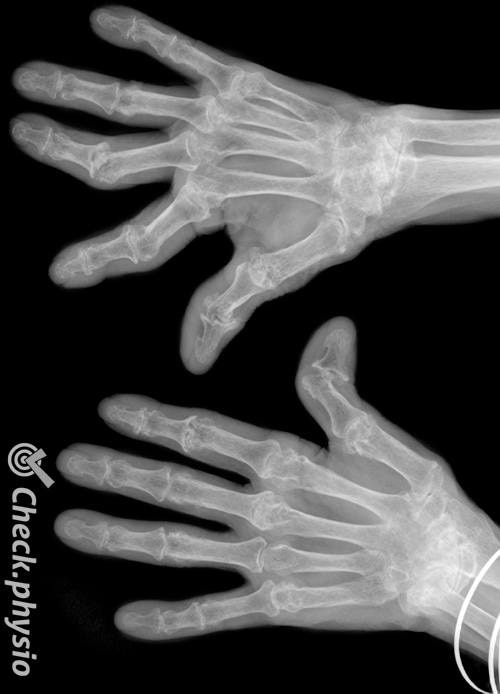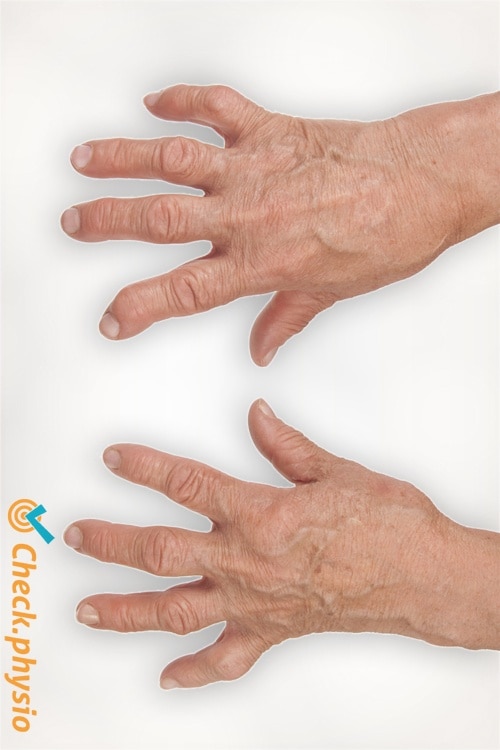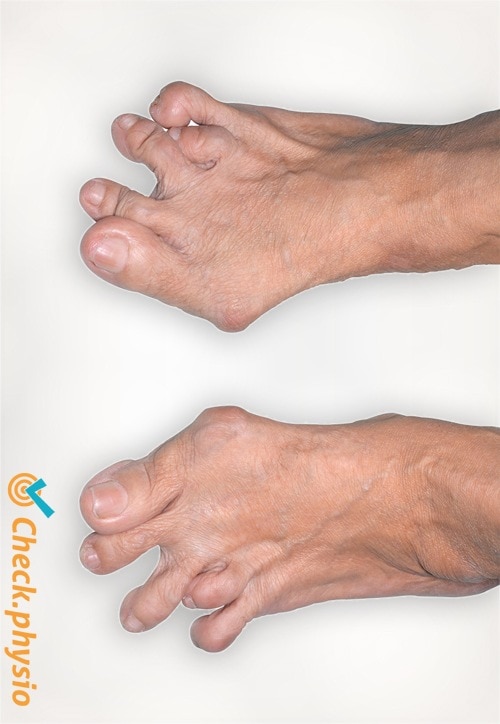Rheumatoid arthritis
RA
Rheumatoid arthritis (RA) is a chronic condition causing inflammation in multiple joints. People with this condition experience pain and stiffness of the joints. The symptoms are often located left and right in the same joints and often start in the fingers and toes.

It is not known why a person develops rheumatoid arthritis. It can occur at any age. Women have a higher risk of developing rheumatoid arthritis than men.
Description of condition
Rheumatoid arthritis is an autoimmune disease. This means that the body produces antibodies against itself, in this case against the tissue on the inside of the joint. The antibodies cause inflammation that can damage the joints.
Cause and history
A lot of research has been performed on rheumatoid arthritis. Unfortunately the exact cause is not yet known. The immune system probably becomes disrupted as a result of a number of factors, such as genetic predisposition and smoking.
Signs & symptoms
The main characteristics are pain, stiffness and swelling in the joints, for example the hands, wrists, ankles or feet. Symptoms may also occur in other joints such as the hips, knees and shoulders.
Inflammation causes the joints to become warm and swollen. A red discoloration can also occur. The symptoms are present both at rest and in motion. The stiffness occurs primarily in the morning, or after the patient has been sitting or lying down in one position for a while. The stiffness can last from half an hour to several hours.
Swelling may occur in the skin as a result of the inflammation. This usually affects the elbow or the forearm. This subcutaneous swelling is referred to as rheumatoid nodules. Without treatment, the patient is at risk of the joints becoming deformed in the long run. For example, bone growth can cause thick nodules to form in the joints of the hands.
The patient may suffer fatigue. If the rheumatoid arthritis flares up badly, the patient may feel ill and feverish. Anemia and weight loss may also occur.
Diagnosis
The diagnosis is made by a rheumatologist based on the patient's story and a physical examination. A blood test will also be performed to support the physical examination. If the joint inflammation has been present for more than 6 weeks and the joints are stiff in the morning (and after rest), this increases the chances of it being rheumatoid arthritis.
Treatment
The patient will receive medication and often will also be guided by a physiotherapist. The aim is to keep the joints supple and improve their physical condition. Quitting smoking has a favorable effect on the course of rheumatoid arthritis.
Exercises
When treating rheumatoid arthritis it is important to do exercises. This keeps the joints supple and your physical condition at a good level. Take a look here at the online exercise program with exercises for rheumatoid arthritis.
You can check your symptoms using the online physiotherapy check or make an appointment with a physiotherapy practice in your locality.


References
Verhaar, J.A.N. & Linden, A.J. van der (2005). Orthopedie. Houten: Bohn Stafleu van Loghum.




